The Evolution of Robbie Williams’ Logo: A Timeline of Visual Identity
Over the decades, Robbie Williams has reinvented his musical style, personal image, and branding, reflected through a diverse range of logos marking key milestones in his career. The first official RW logo debuted in 1999, setting the foundation for a series of design reinventions that have aligned with new artistic directions, album releases, and personal milestones.
From bold typographic experiments to symbolic and minimalist concepts, each logo has captured the spirit of its time, offering fans visual cues to the stories and soundscapes that defined each era. Here's a look at how his graphic identity has evolved from its early origins to the present day.
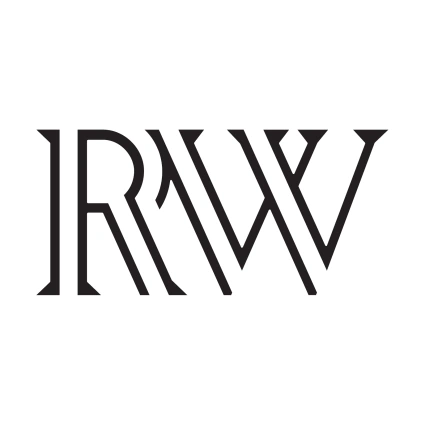
2022 - 25th Anniversary Logo
Unveiled during Robbie Williams’ Homecoming Gig on 4 June 2022, the logo marked the 25th anniversary of his solo career and the release of XXV. It features a lean black outline of the initials RW, rendered in a minimalist style. The design reflects a mature, legacy-focused aesthetic and was used across album artwork, promotional materials, and merchandise
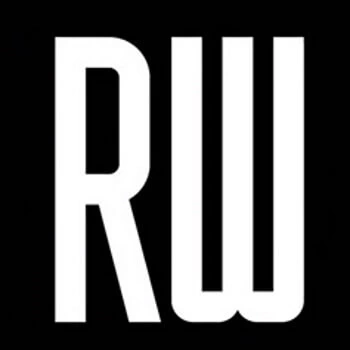
2016 - Square-Shaped RW Logo
In 2016, a minimalist square-shaped RW logo was introduced, featuring clean geometric initials inside a frame. Separate from album branding, it served as a sleek visual motif across digital platforms, merchandise, and backstage passes. With sharp sans-serif styling and symmetry, it conveyed a refined, modern look distinct from other logos of the era.
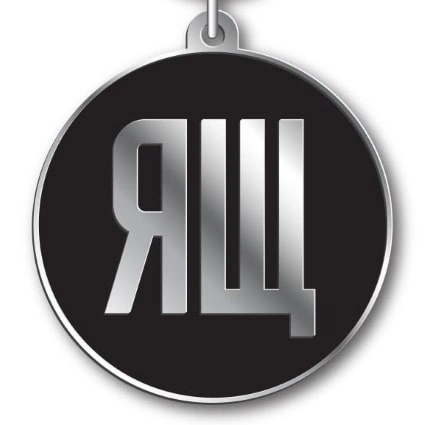
2016 - Inverted "R" & Wiggly "W" Logo
Used prominently for The Heavy Entertainment Show, this expressive logo combined an inverted "R" and a square "W" with a quirky wiggle. It echoed the album's bold tone and showbiz flair, appearing on boxing gloves and teaser visuals. The stylised lettering added movement and theatricality, serving as the primary emblem of Robbie's 2016 entertainment era.
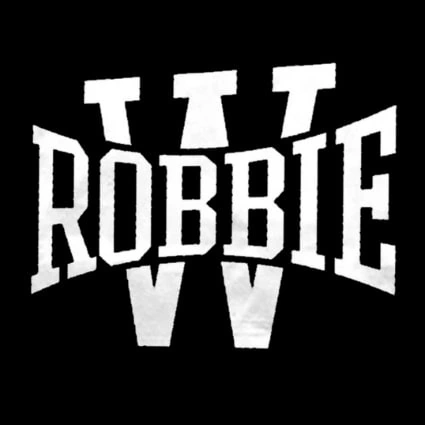
2016 - "Robbie" Over Large "W" Logo
Also from 2016, this logo placed the word "Robbie" over an oversized "W", creating a layered typographic design. It was primarily featured in press materials and promotional graphics tied to The Heavy Entertainment Show. Bold and attention-grabbing, the contrast of scale between text elements reinforced Robbie’s presence and the larger-than-life energy of the campaign.
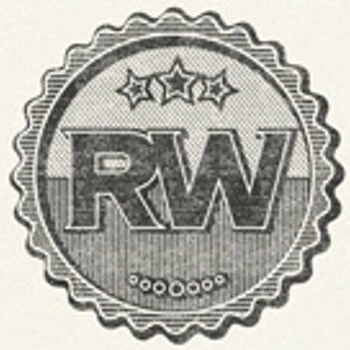
2013 - Swings Both Ways Logo
Designed to complement the retro theme of Swings Both Ways, this logo incorporated classic typographic styling to echo the album’s nostalgic influences. It appeared in press visuals and marketing materials, capturing the swing era vibe through elegant lettering and layout. Its vintage aesthetic marked a tonal shift from previous branding efforts.
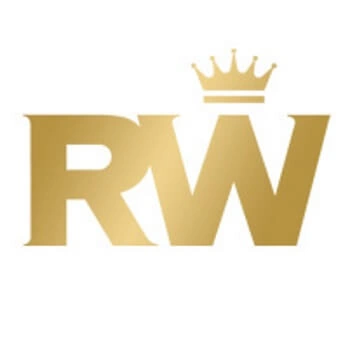
2012 - Take the Crown Logo
Released with Take the Crown, this logo displayed golden RW initials topped with a crown above the “W”. The regal motif reinforced themes of triumph and legacy. It featured prominently on album artwork, merchandise, and tour visuals, lending a formal and celebratory tone to Robbie’s return to solo stardom after a brief reunion with Take That.
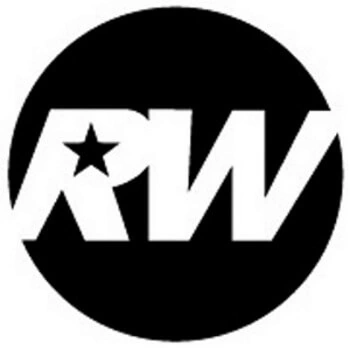
2011 - Return of the Original Logo
Robbie Williams revived his original RW logo in 2011, reintroducing it across press kits and promotional campaigns. The move reflected continuity and nostalgia, coinciding with his reintegration into Take That and the eventual transition back to solo releases. Its familiar styling reconnected fans with the early visual identity of his solo journey.
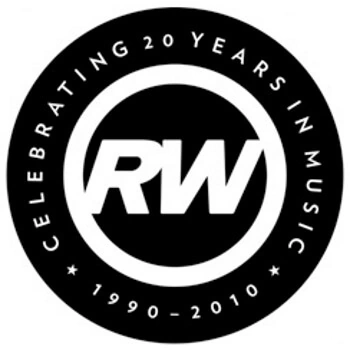
2010 - Ringed Anniversary Logo
To mark 20 years in music, a commemorative logo based on the original RW design was enclosed in a ring. Around the edge, it read "Celebrating 20 Years in Music · 1990–2010", honouring Robbie’s two-decade career. This emblem appeared on special merchandise, promotional items, and limited-edition releases, framing the occasion in a respectful, archival tone.
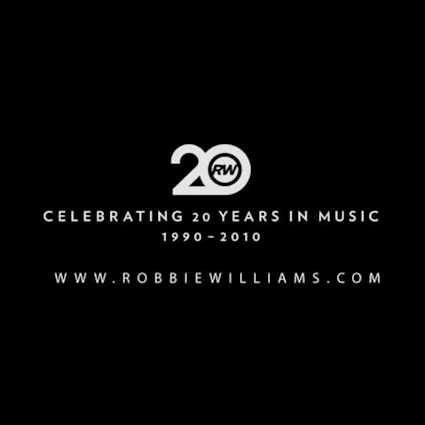
2010 - Embedded Anniversary Logo
Another celebratory version in 2010 featured the number “20” with the original RW logo embedded in the zero. This design was symbolic and understated, appearing on memorabilia and social media graphics. It visually marked the milestone with subtle flair, blending numerical reference with Robbie’s enduring brand identity.

2009 - No Logo
For the 2009 release of Reality Killed the Video Star, Robbie Williams opted not to use any RW logo or symbolic branding. The album was released under the Virgin label, whose logo appeared as the only visible emblem on the artwork. This marked a departure from previous visual identity norms and coincided with EMI's restructuring and the emergence of Farrell Music branding.
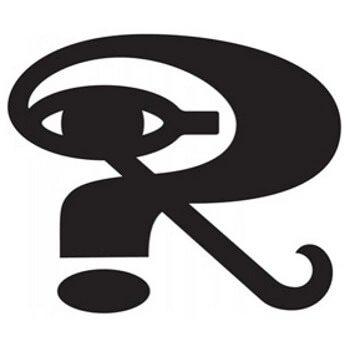
2005 - Symbolic Tattoo Logo
Inspired by Robbie's neck tattoo, this logo fused the letter "R", a question mark, and the Eye of Horus. Introduced in 2005, it symbolised introspection, mystery, and personal mythology. The design was used on stage visuals and select merchandise, blending spiritual iconography with personal branding in an unconventional aesthetic.
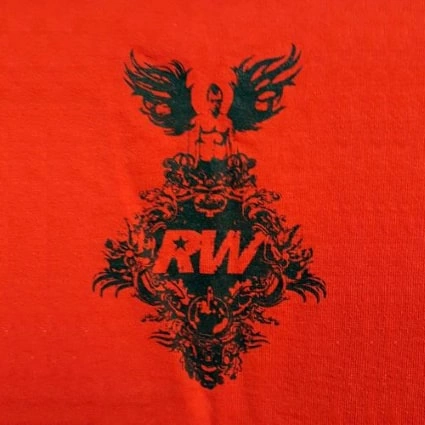
2003 - Tribal Tour Logo
Created exclusively for the What We Did Last Summer tour, this tribal-style logo debuted during Robbie’s Knebworth concerts. With over 375,000 in-person attendees and 3.5 million watching worldwide, the emblem helped define the tour’s identity. It featured abstract, bold shapes and was applied across stage assets and fan merchandise.

2002 - Stamp Variants
During the Escapology era, RW logos were often used as stamps on CD sleeves and promotional singles. These weren't full redesigns but rather stylised applications of the original logo, sometimes embossed or colour-shifted. They appeared on releases like Feel, Come Undone, and Sexed Up.
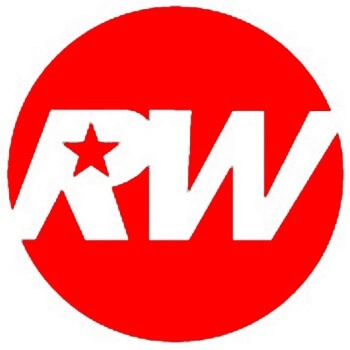
2001 - Colourful RW Logo
In 2001, the RW logo was stamped on singles in bold hues like red and purple. This colourful adaptation gave Robbie a vibrant, consistent visual brand across physical releases and promotional artwork. It offered recognition and cohesion during an era of high commercial output and stylistic exploration.

1999 - Original RW Logo
First appeared on the Strong single, this logo featured RW initials inside a black circle, with the "R" containing a star-shaped opening. It established Robbie's solo brand identity and was used consistently across early singles and promotional materials.